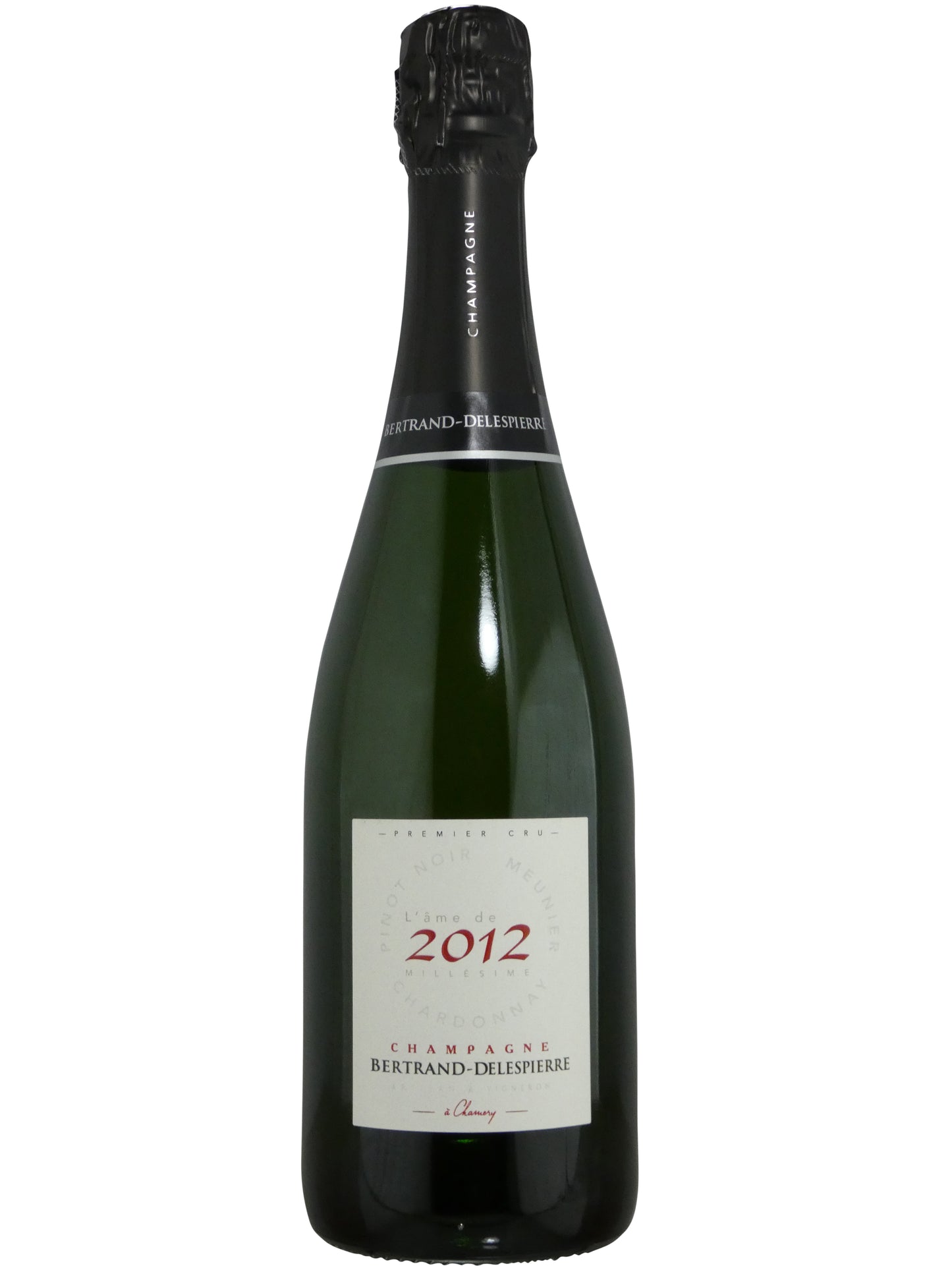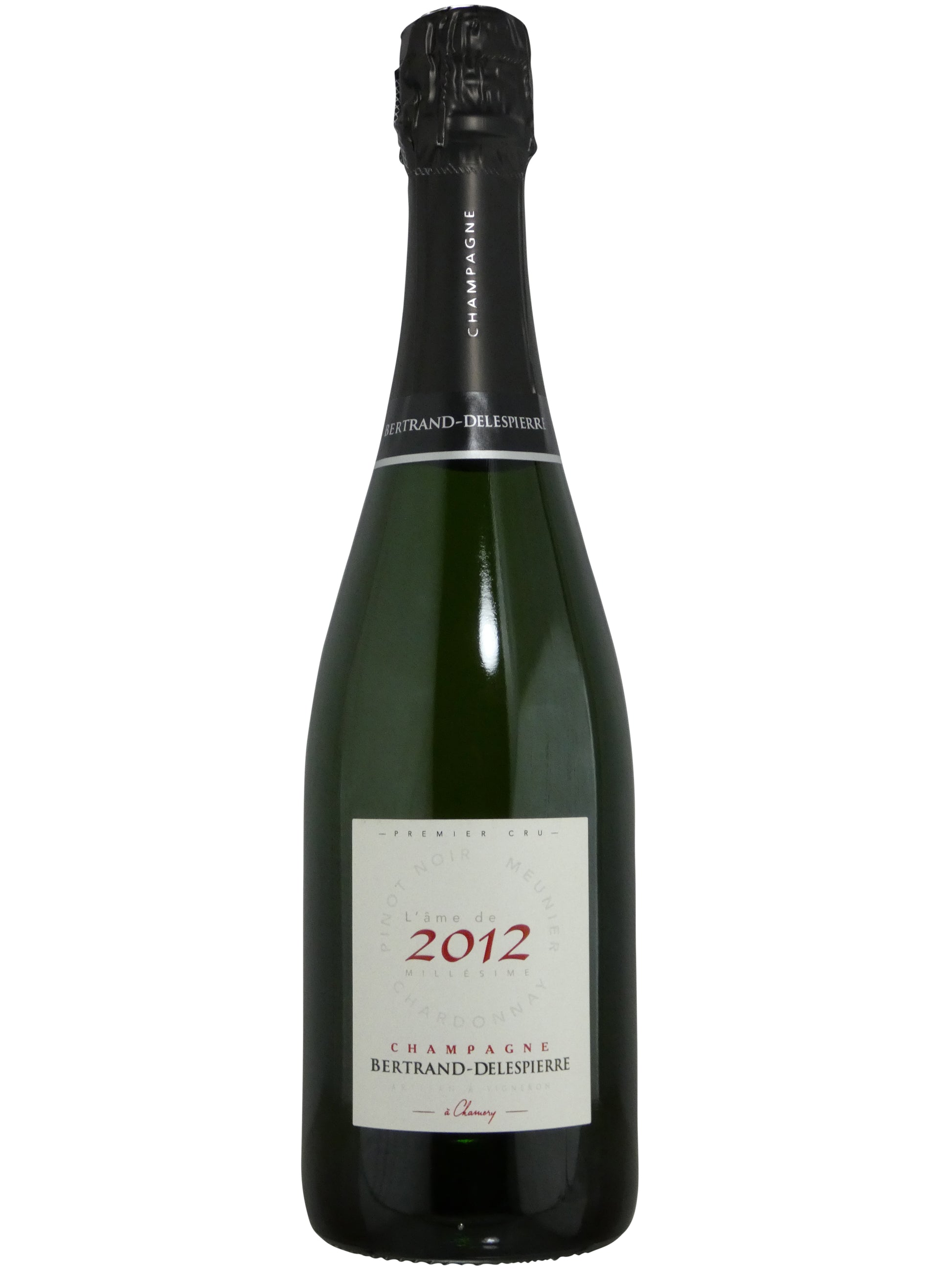1
/
of
1
Bertrand Delespierre L'Ame 1er Cru Brut - 2015 (750ml)
Bertrand Delespierre L'Ame 1er Cru Brut - 2015 (750ml)
Regular price
$89.99
Sale price
$89.99
Regular price
$99.99
Unit price
/
per
Aromas of apple, peach and pear on the nose, with rich, buttery, brioche notes. Lush fruit flavors and fine bubble texture on the palate, ending with a long, persistent finish.
SERVE WITH: Excellent with seafood, poultry, or veal it can also stand up to rich, earthy dishes such as mushroom risotto.
Winemaker's Notes
Winemaker's Notes
Availability:
23 In Stock
$25 Shipping on Orders +$299
Couldn't load pickup availability
Share :

- Type
- Reviews
Product Review
VINEYARDS
24 acres: 10 Pinot Noir, 7.5 Pinot Meunier, 7.5 Chardonnay.
The totality of Bertrand-Delespierre's acreage is in Premier
Cru vineyards, mostly in Chamery, with a few parcels in the
villages of Villedommange, Ecueil and Montbré.
As an RM (“Recoltant Manipulant” – the French term for
Grower’s Champagne), Bertrand-Delespierre makes
Champagnes exclusively from its own vineyards. Many
consumers have begun to favor Grower’s Champagne over
the Grande Marques labels, which often offer high quality
and a true house style, but little in the way of the
expression of terroir, as the basic bruts are often blended
from a wide range of Champagne districts.
APPELLATION
Champagne, Chamery 1er Cru (Montagne de Reims,).
COMPOSITION
Equal parts Pinot Noir, Pinot Meunier and Chardonnay.
VITICULTURE
Organic farming (non-certified). Vines average 25 years in
age, with the oldest parcel more than 55 years old.
VINIFICATION
Bertrand-Delespierre produces vintage Champagnes only
in exceptional years. Win
Champagne was the first region in the world to start producing sparkling wine on a commercial level and where most New World producers look to for inspiration. Producing a fizzy wine often occurred by accident, and was, for a long time seen as a detriment with producers going to great lengths to prevent a second fermentation. Due to the marginal climate the temperature in the fall would often dip, sedating the yeasts before all the sugars were converted into alcohol. When the region warmed up the following spring the unfermented sugars occasionally spurred on a second fermentation trapping the carbon dioxide (a by-product) in the bottle . It wasn’t until the turn of the 19th century that sparkling wine became popular and desirable. The region is split into four regions. Three are adjoining: The Montagne de Rheims to the north, the Cotes de Blanc to the south, and the Marne Valley in between. The fourth and separate region is the Cote des Bar in the Aube valley, some 70 miles south of Epernay.
Sparkling wine is a wine with high levels of carbon dioxide in it making it bubble. The carbon dioxide is a result of natural fermentation, either in a bottle or a specially designed tank, or as a result of carbon dioxide injection.Sparkling wine is usually white or rosé but there are many examples of red sparkling wines. The sweetness of sparkling wine can range from very dry "brut" styles to sweeter "doux" varieties.When one thinks of sparkling wine they usually think of Champagne, but this wine is exclusively produced in the Champagne region of France and many sparkling wines are produced in other countries and regions. Most countries reserve the word Champagne for a specific type from the Champagne region of France. The French terms "Mousseux" or "Crémant" are used to refer to sparkling wine not made in the Champagne region. German and Austrian sparkling wines are called Sekt. The United States is a significant producer of sparkling wine with producers in numerous states. Recently the United Kingdom, which produced some of the earliest examples of sparkling wine, has started producing sparkling wines again.


